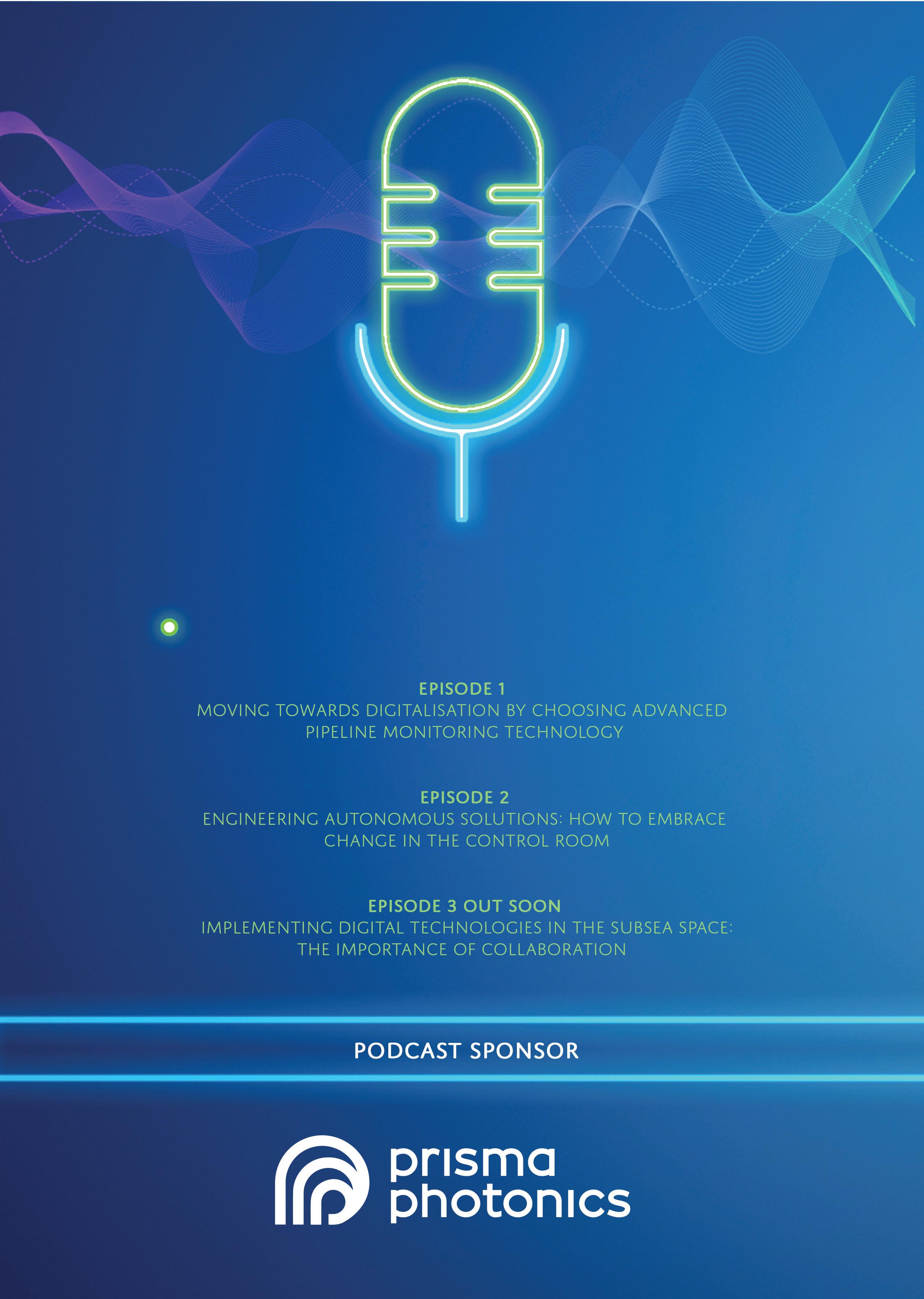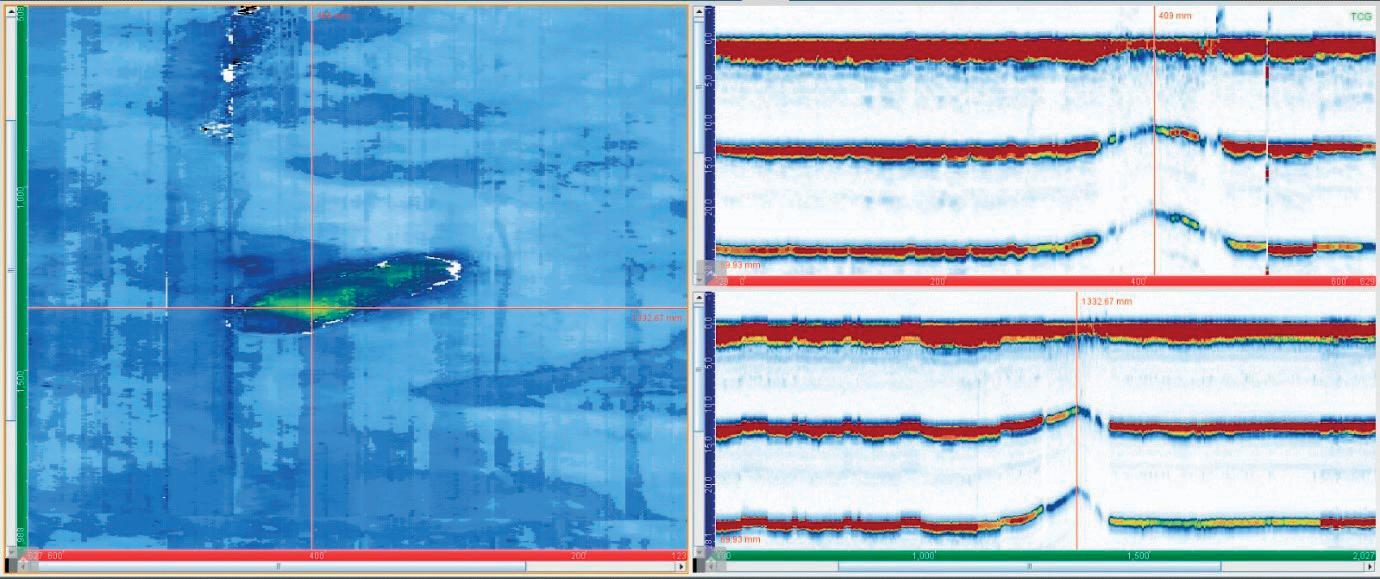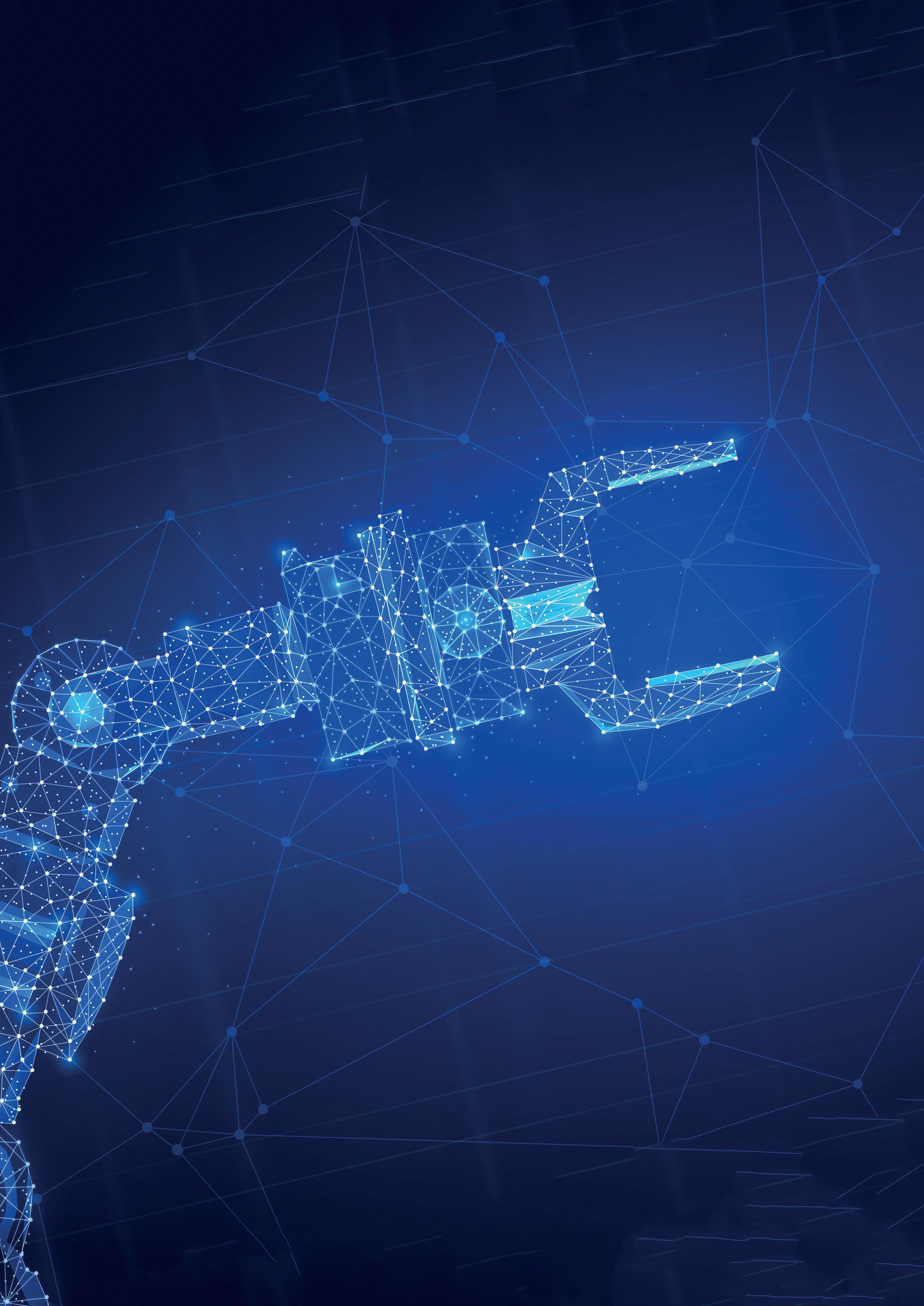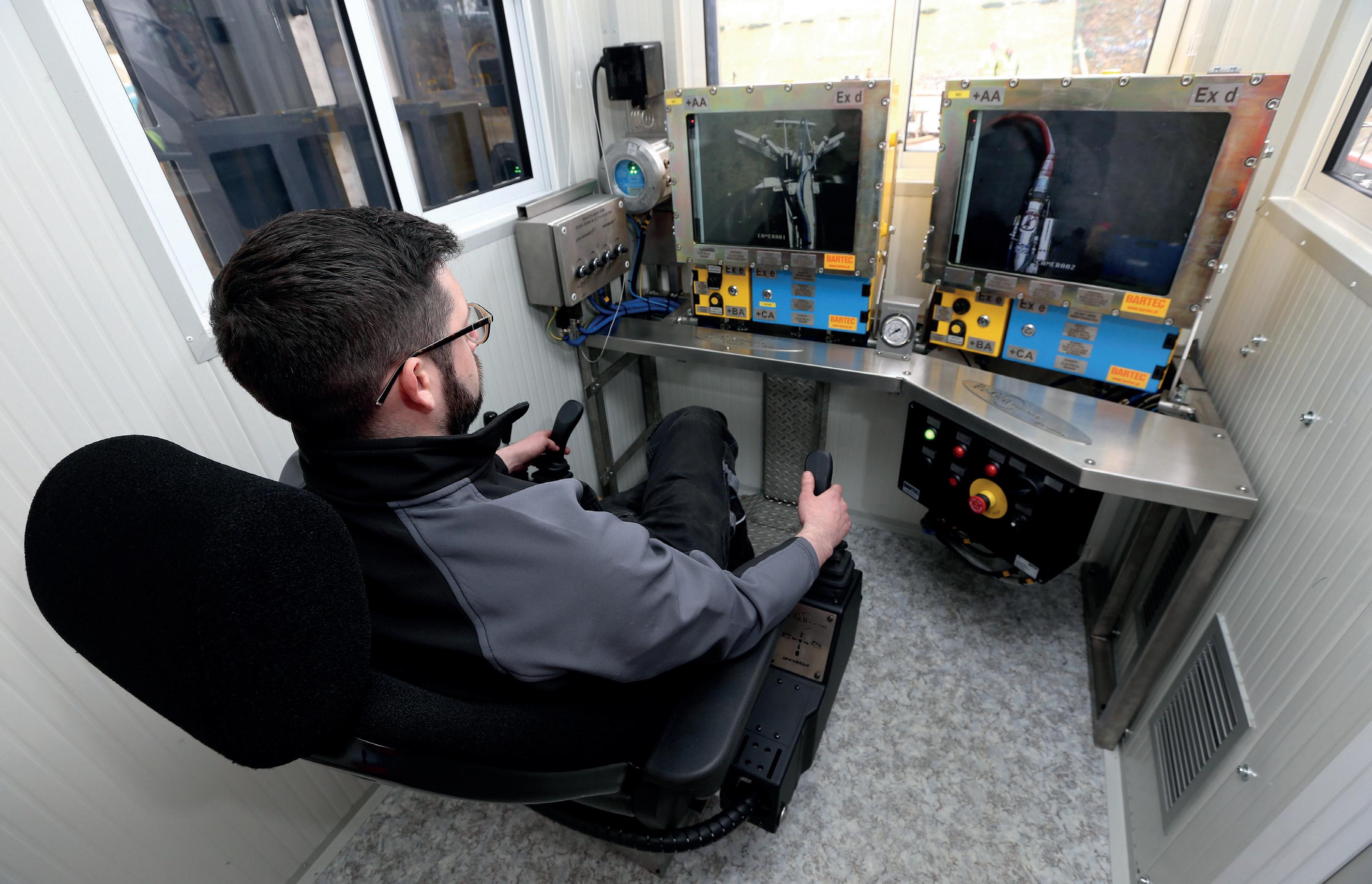
7 minute read
The robotic revolution
Introducing the Palladian Energy Podcast

Series 1: Digitalisation in the oil and gas sector


Figure 3. Corrosion area with material losses of 2.2 mm from a 12 mm nominal, found from 1000 km away.
defect shape representation, multi-orientation displays, and 3D imaging with merged data sets. Offline gate manipulation is also possible. This data is necessary for a robust digital twin asset management programme. It can be exported to CSV format and overlaid with periodic data sets to analyse trends and make better informed decisions.
Case study
NDE Solutions, a service provider based in Adelaide, Australia, is comprised of a team of experts in inspection technology. The company’s Founder and Director, Kimal Singh, is an expert in advanced ultrasonics. When Kimal received a phone call from one of his onsite scanner technicians, he was met with questions about how to operate the RMS PA corrosion mapping solution and perform the phased array calibration for the system. At the time, Kimal was in insolation due to government restrictions. However, Eddyfi Technologies’ phased array units feature fully-integrated control software, so the scanner is manipulated and driven through the Windows-based graphical user interface on the phased array instrument. As such, despite being 1000 km away, Kimal was able to remotely login to the phased array tool and perform the calibration and scan on the tank. Having access to the control software, he could easily input the required commands from home for moving the scanner, capturing the high-quality data and remotely analysing the corrosion mapping data in real time.
This solution offered a bespoke learning perspective that would not have been possible had Kimal been on the job site.
Opening up opportunities to comfortably provide support remotely is one of the first steps towards the future of remote inspection with on-demand subject matter experts. Remotely accessed robotics are a possible answer to tank and terminal inspections burdened by limited access due to travel or similar restrictions.
Another example that supports the case for remotely accessed robotics is the growing concern of operational plant failure leaving no scope for deferment. In this case, data analysis was arranged remotely, but the equipment was incorrectly set up. The ability to remotely login to the phased array tool and fully integrated robotic controls made it possible to perform the necessary calibration sequence, robotic manipulation and data acquisition from 1100 miles away. This example demonstrates the technology’s increased utilisation with limited expertise.
Conclusion
Remotely accessed robotics for tank and terminal asset integrity management not only reduce costs with regards to mobilisation and expertise, but they also allow for immediate decision making with Level III consultancy. The new way of working with remote services as an alternative to full onsite operations helps to ensure improved compliance with calibration sequences and accelerated and enhanced training programmes. Future developments will further improve data input and efficiency.
In conclusion, while the increased use of automation and robotics was anticipated for better tank integrity assessments, there has been an audible step change within the industry, with the newfound capacity to collect 1 mm resolution phased array corrosion mapping data from the comfort of one’s living room. With phased array reducing inspection times, 100% of the data collected while the tank remains online and robotic systems remotely controlled from virtually anywhere, the potential to reshape inspection operations is now a reality, and ongoing developments will continue to drive better data quality and efficiencies for optimal tank integrity management.
Fintan Duffy, Re-Gen Robotics, Northern Ireland, outlines the benefits of robotic tank cleaning solutions through the real-life example of an operation at a refinery in the UK.

Until the launch of 100% no man entry robotic tank cleaning in March 2019, the only option available to terminal operators was to send personnel inside fuel tanks with highly-explosive atmospheres, using breathing apparatus and chemical suits. Traditionally, people have had to enter oil tanks to implement inspections, de-sludge, and clean for product change. Although safety regulations and industry standards are stringent, accidents can occur due to human error and the failure of safety devices. Exposure to hazardous petrochemicals, heat stress, lack of oxygen, slips and falls, fires and explosions are the main risks faced by personnel who manually clean oil tanks.
In response to the rising number of confined space deaths, and after years of extensive research, a patented solution was developed to help ensure that workers are not endangered by operations carried out in hazardous confined spaces.
Four main robotic tank cleaning services for fixed roof, floating roof, heavy fuel oil (HFO) and coned floor tank cleaning are offered. The operator remains in a Zone 1
control unit where activity is scrutinised through a series of ATEX cameras and gas monitoring equipment fixed to a robot.
The entire tank cleaning system can be set up in 2 hours, which is a fraction of the time required for human crews to prepare for tank entry. Primarily, however, it removes individuals from hazardous spaces filled with chemicals and gasses that can lead to serious long-term health issues.
No man entry tank cleaning solutions have clear advantages for tank terminal operators: there are fixed costs, reduced paperwork and permits, and no requirement for capital outlay or standby rescue teams.
Since 2019, 10 000+ hours of confined space cleaning have been eliminated, leading to an overall reduction in both accidents and health and safety incidents onsite. The bar for safety has been raised in an industry with potential dangers, and the frequency of injuries and fatalities in the tank terminal sector has been significantly reduced.
Case study
Following a full demonstration of its service, whilst cleaning a 48 m crude oil tank with steam coils, Re-Gen Robotics was commissioned on Phillips 66’s Humber Refinery site in North Lincolnshire, England, to clean a 50 m fixed roof, cone-up floor crude oil tank.
Phillips 66 Humber Refinery is one of the most complex refineries in the company’s portfolio and one of the most sophisticated refineries in Europe. The vast range of products it produces not only includes fuel, but also raw materials that are transformed into everything from essential components for electric vehicle (EV) batteries, to toiletries. Approximately 20% of all UK petroleum products come from the Humber Refinery.
Given the information provided by the client, Re-Gen Robotics received a sample proposal on the indicative timings and cost of the tank clean, as exact tank furniture details and volume of sludge were unspecified. The team then visited Phillips 66 onsite to gain a detailed understanding of the scope of work.
Following the site visit, a final proposal outlining the method, timeframe and cost was provided.
The tank had numerous steam coils which the robot was required to navigate. The volume of waste inside the tank was understood to be approximately 135 t and the product temperature was ambient.
This was the first no man entry tank clean for Phillips 66 and the company was pleased at the prospect of eliminating the need for personnel to physically enter the tank.
The robotic tank cleaning system has an offset suction head to allow meticulous cleaning underneath heating coils, as well as an auger system for the removal of heavy sludge. In addition, it has front and rear ATEX CCTV and lighting for easy internal tank navigation and inspection. This tool alone can decrease tank cleaning time by 10 – 12%.
Using high pressure, low flow jetting systems, and a powerful 4800 m3 vacuum, the heavy oil tank cleaning robotic system was designed to easily fit through a standard 600 mm manway, using externally-fitted hydraulic ramps.

Figure 1. Self-contained cranage system.

Figure 2. Control room.
Results
The operator remained in the Zone 1 control unit where he could monitor activity through a series of ATEX cameras and gas monitoring equipment that was fixed to the robot.
In total, 536 t of sludge was removed from the tank, with 92 t of water utilised during the entire tank clean. Robots use up less water than human crews use when cleaning the same tanks. The robots also clean the tanks in half the time that humans do, reducing environmental impact.
Traditionally, it would have taken a team of six men 95 days to complete the clean. Using no man entry cleaning, the three-man team took 43 days (1520 robotic hours) to complete the job (30 of those days were spent on sludge removal alone).
Overall man hours onsite were reduced from 12 160 to 1032 and the standby rescue team was not required. Re-Gen Robotics is classed as a medium risk contractor, therefore less paperwork and permits were necessary. In addition, there was no requirement for capital outlay or spading of the tank, which can take a full day to accomplish.
Upon completion of the tank clean, client feedback was positive. This was the first tank to be completely cleaned and inspected by the company without the need for human presence in the tank.
Following the initial contract, Re-Gen Robotics was commissioned to clean a further three tanks at the site and has recently been included in the tender process for 14 tanks









